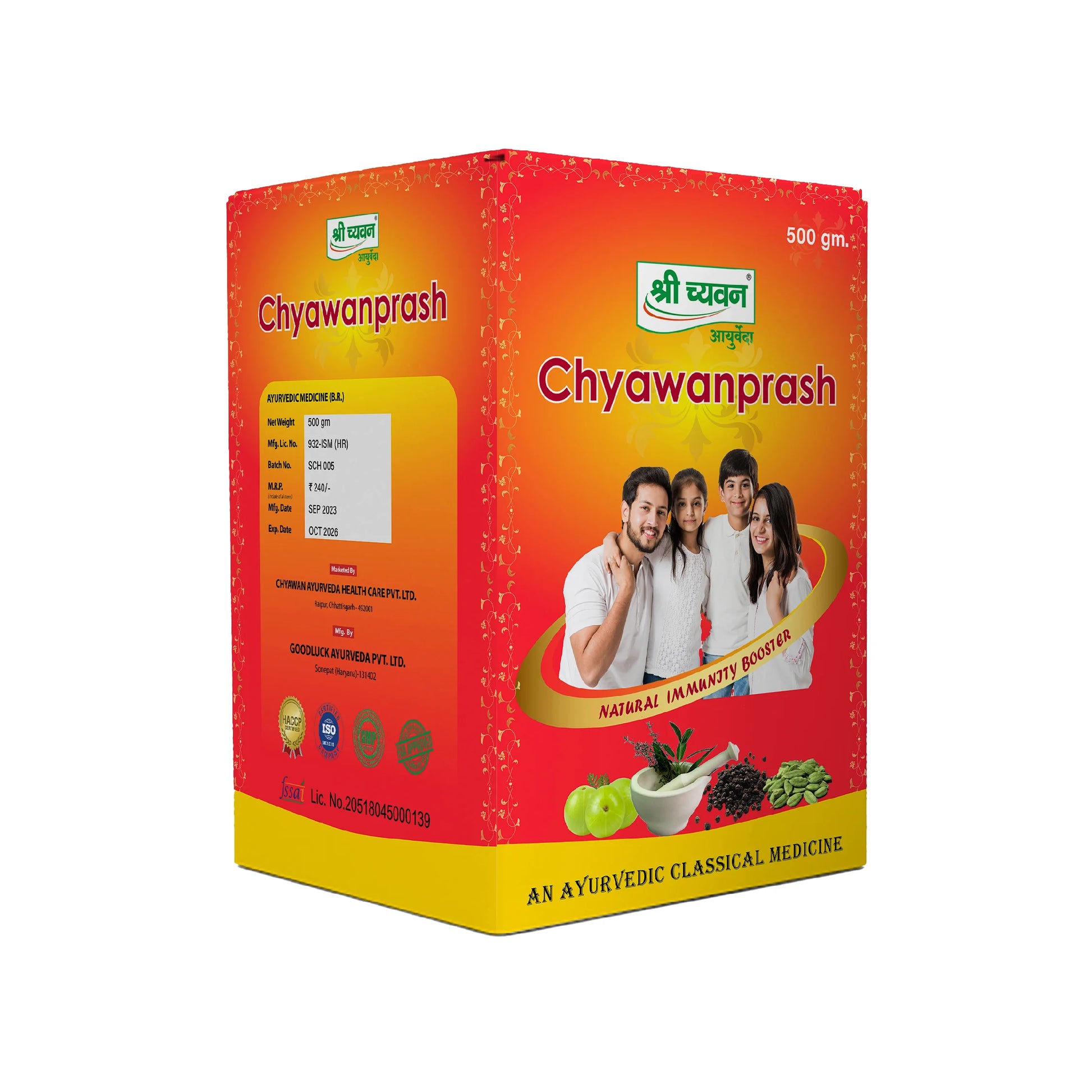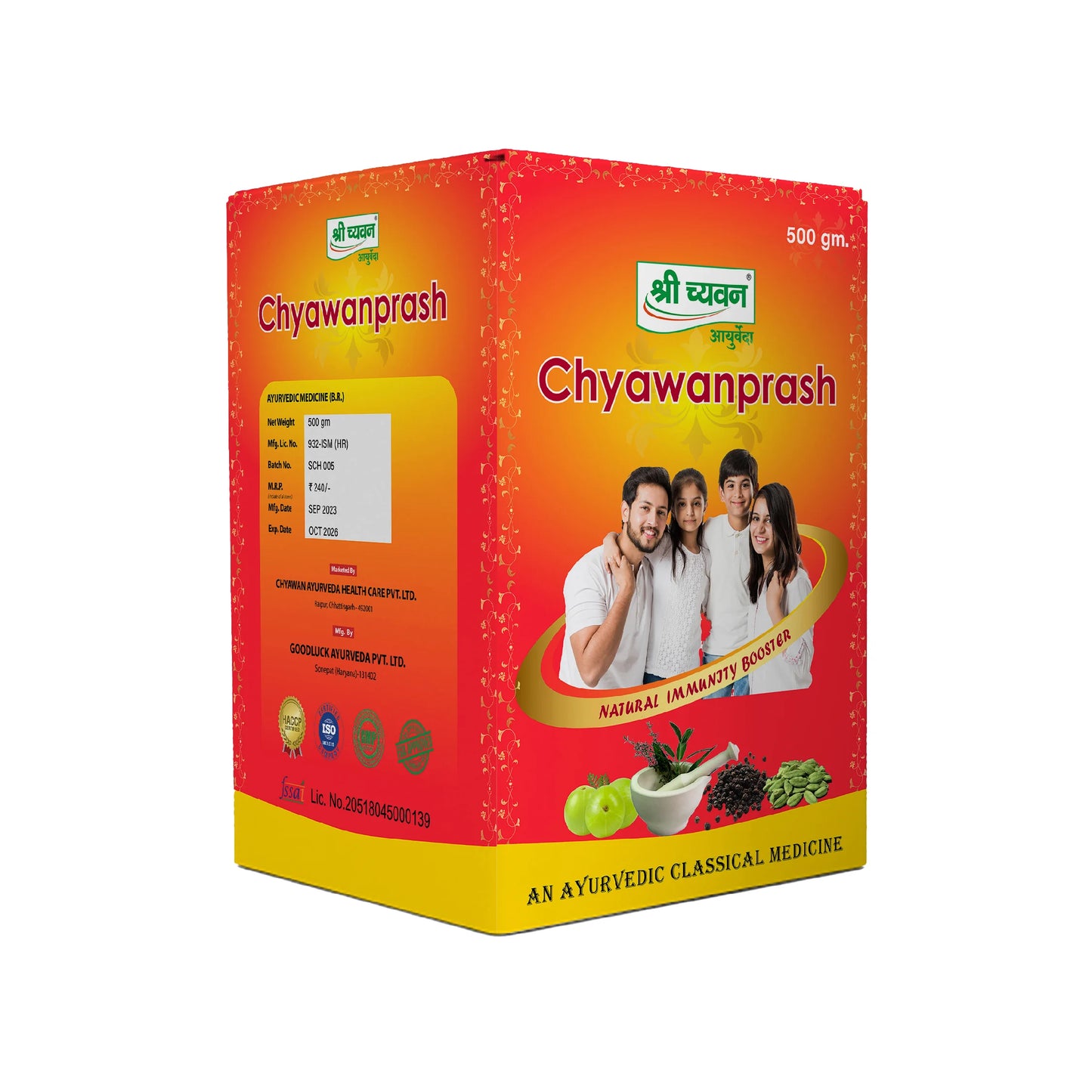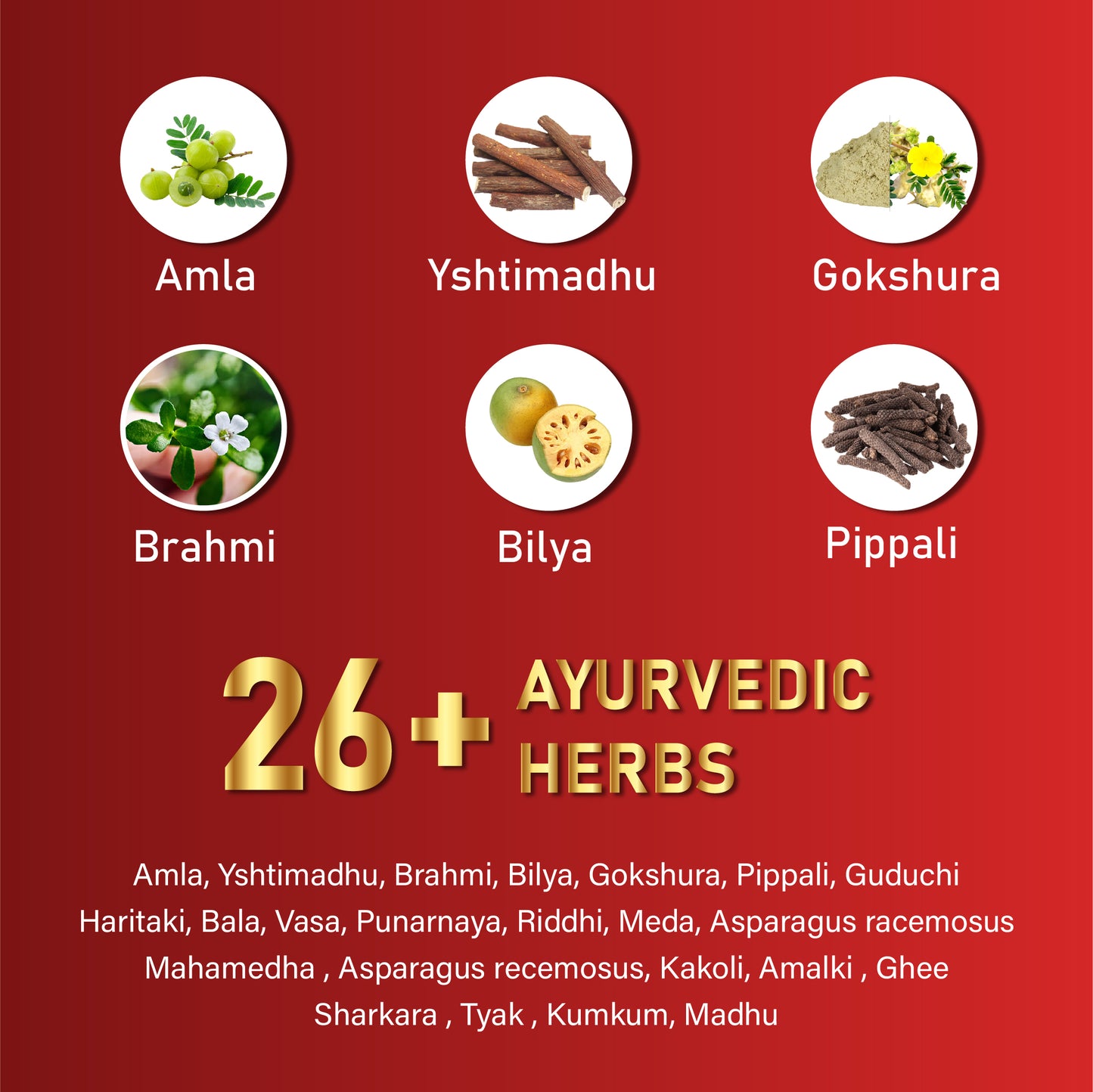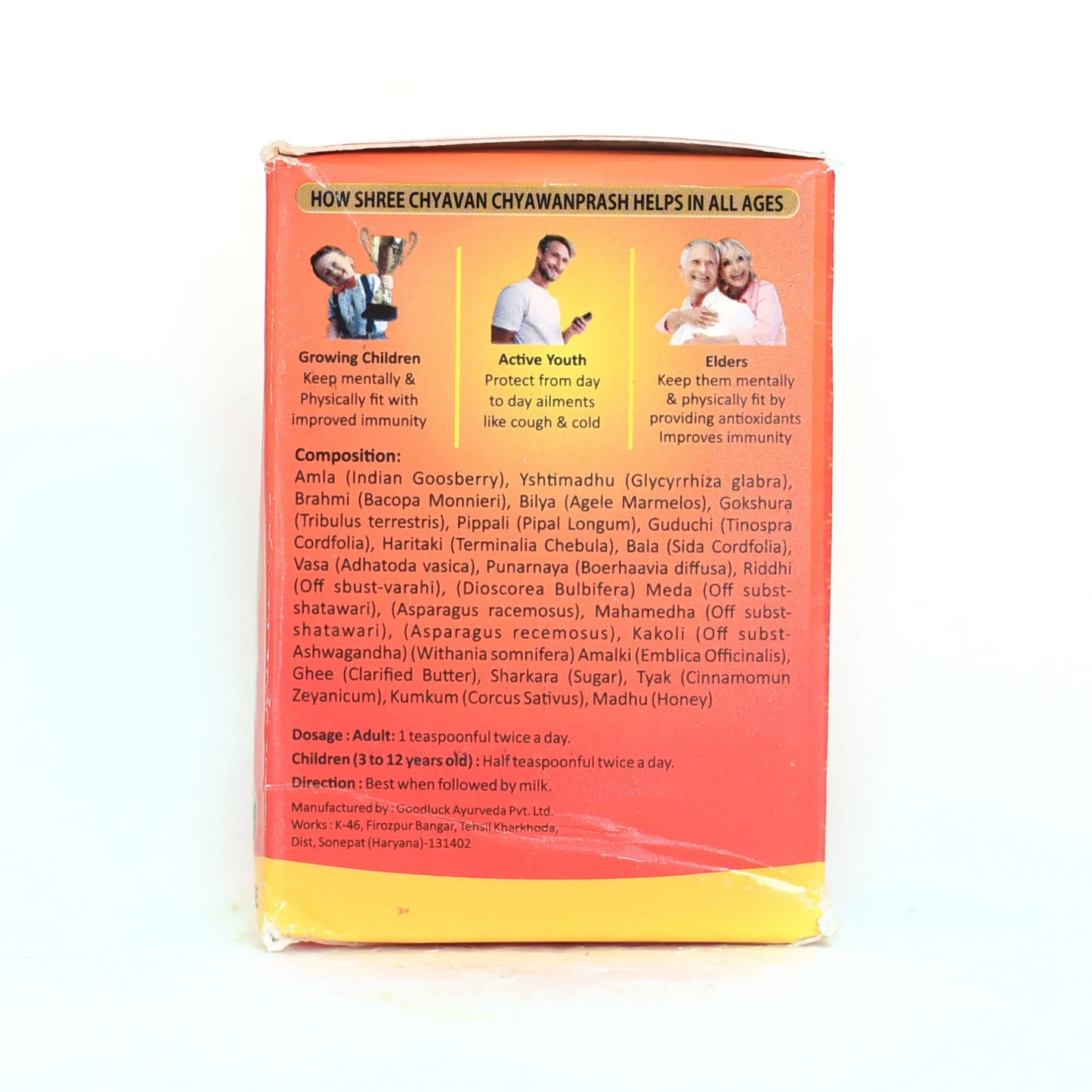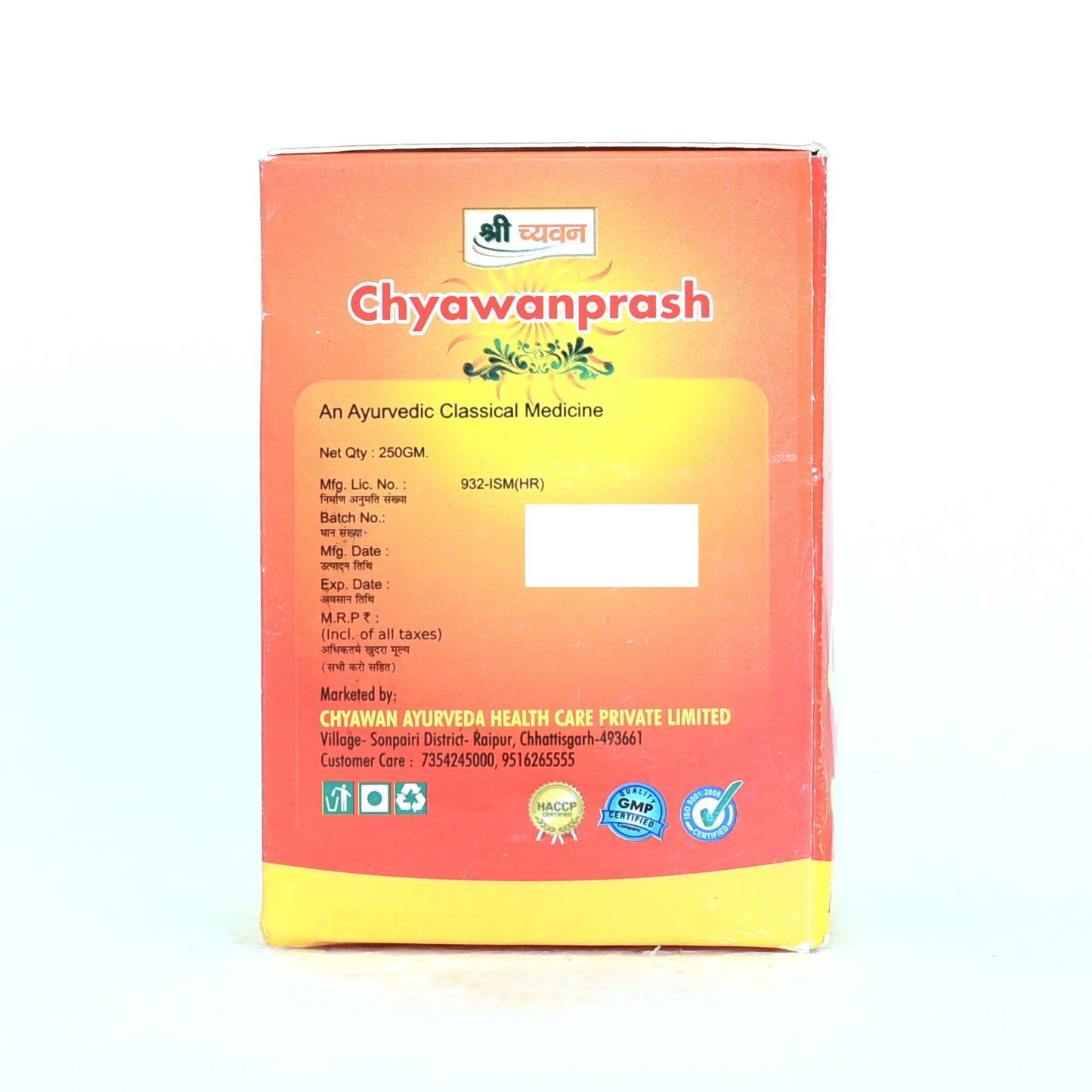Chyawanprash - Introduction
Chyawanprash is a traditional Ayurvedic herbal jam or paste that has been used for centuries in India and neighbouring countries as a dietary supplement and natural health tonic. It is named after a sage named Chyawan who, according to legend, was the first person to prepare this herbal concoction.
Chyawanprash is typically made from a combination of various herbs, spices, and other natural ingredients. While the exact recipe can vary, it commonly includes ingredients such as amla (Indian gooseberry), ghee (clarified butter), honey, herbs like ashwagandha, giloy, and various other adaptogenic and medicinal herbs. These ingredients are carefully prepared and cooked together to form a thick, dark-colored paste or jam.

Origin of Chyawanprash
Chyawanprash has its origins in ancient Ayurvedic medicine, which is a traditional system of medicine that has been practiced in India for over 5,000 years. According to Ayurvedic tradition, Chyawanprash is named after a sage named Chyawan, who is credited with its creation.
The story of Chyawanprash's origin is a part of Hindu mythology and is found in the ancient Indian texts known as the Vedas. The legend goes as follows:
Sage Chyawan was known for his deep meditation and ascetic practices. Over time, due to his austere lifestyle, he became very old and frail. One day, while bathing in the Ganges River, he was disturbed by two celestial nymphs named Ghritachi and Menaka, who were flying overhead. Startled by their presence, he sneezed, and when he did, a few drops of his semen fell into the water.
These drops were discovered by the celestial maidens, and they approached Lord Indra, the king of the heavens, with the divine substance. Lord Indra recognized the potential of this substance to rejuvenate and confer immortality. He tasked the physicians of the gods, the Ashwini Kumaras, with transforming it into a potent elixir.
The Ashwini Kumaras mixed the celestial substance with a variety of herbs, fruits, and other natural ingredients with medicinal properties. The resulting concoction became known as Chyawanprash, and it was presented to Sage Chyawan as a gift to restore his youth and vitality.
In essence, Chyawanprash is believed to have been created as a rejuvenating and revitalizing formula based on this ancient mythological story. It became an integral part of Ayurvedic medicine and has been used for centuries in India and neighbouring regions as a natural health tonic and dietary supplement. While the mythological origins of Chyawanprash are a significant part of its history, its effectiveness and popularity are primarily attributed to its herbal and nutritional components within the framework of Ayurveda.
Chyawanprash Ingredients
-
Amla: It is one of the primary ingredients in Chyawanprash. It is rich in vitamin C and antioxidants, which are known to boost immunity and provide numerous health benefits.
-
Yashtimadhu: It can help alleviate coughs, sore throats, and is often used to promote respiratory health.
-
Brahmi: It is an adaptogenic herb known for its cognitive and memory-enhancing properties. It is believed to support mental clarity and concentration.
-
Bilva: Also known as Bael, is traditionally used to treat digestive disorders and provide relief from constipation and diarrhoea.
-
Gokshura: It is used in Ayurveda for its potential to support urinary and reproductive health.
-
Pippali: It is known for its digestive and respiratory benefits. It may help with digestion, stimulate the appetite, and support respiratory health.
-
Guduchi: It is considered an immunomodulatory herb that can help boost the immune system. It is also used for its anti-inflammatory properties.
-
Haritaki: It is known for its digestive benefits and is believed to help cleanse the digestive tract. It may also have mild laxative properties.
-
Bala: It is traditionally used for its potential to promote strength and vitality. It is considered a rejuvenating herb.
-
Vasa: It is used for respiratory health and is believed to help with conditions like coughs and colds.
-
Punarnava: It is known for its diuretic properties and is used to support kidney and urinary health.
-
Ghee: It is used as a carrier for the herbal ingredients and provides healthy fats.
- Madhu (Honey): Honey is used both as a sweetener and a binding agent in Chyawanprash.
Shri Chyawan Ayurveda’s Chyawanprash
Chyawanprash, crafted with precision and care is a wholesome blend of powerful botanical ingredients, each chosen for its unique health-enhancing properties. With a legacy dating back to ancient India, this herbal formulation has stood the test of time and is now available to support your holistic well-being.
Chyawanprash Benefits:
-
Boosting immunity: Chyawanprash is often taken to strengthen the immune system, making it more resistant to infections and illnesses.
-
Providing antioxidants: Amla, a key ingredient in Chyawanprash, is rich in antioxidants, which can help combat free radicals and reduce oxidative stress in the body.
-
Supporting digestion: Some herbs in Chyawanprash are believed to aid in digestion and promote gastrointestinal health.
-
Enhancing energy and vitality: The combination of herbs and nutrients in Chyawanprash is thought to improve overall energy levels and vitality.
-
Improving respiratory health: Chyawanprash may help support respiratory function and alleviate conditions like coughs and colds.
- Rejuvenating the body: Ayurveda suggests that Chyawanprash has rejuvenating properties, helping to slow down the aging process and promote longevity.
How to Use: Adult: 1 teaspoonful twice a day. Children (3 to 12 years old): Half teaspoonful twice a day. Direction: Best when followed by milk.
Consuming Chyawanprash regularly can be a part of a holistic approach to promoting overall well-being, particularly in the context of Ayurvedic tradition. However, it's essential to remember that individual responses to Chyawanprash may vary, and its effectiveness can be influenced by factors like diet, lifestyle, and existing health conditions. Additionally, Chyawanprash should be consumed in moderation, and it should not be used as a sole replacement for a balanced diet and a healthy lifestyle.



